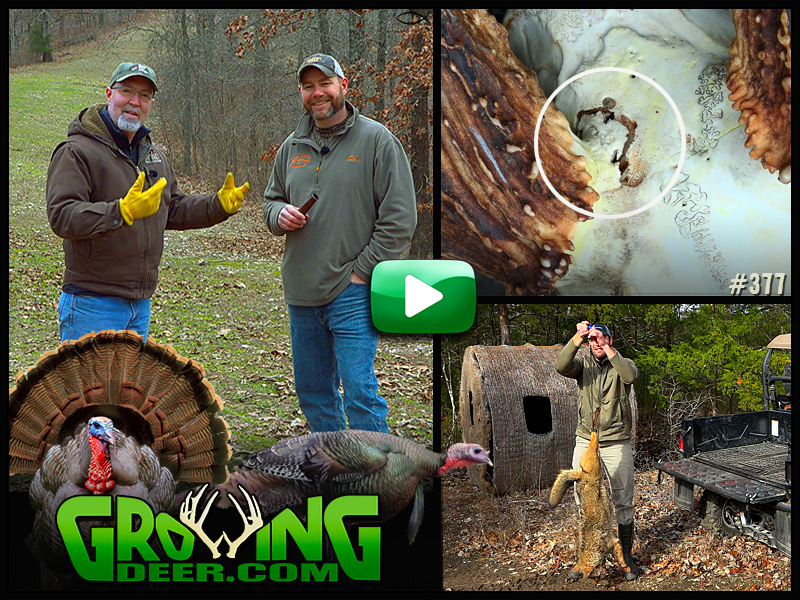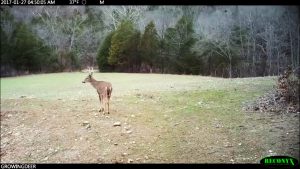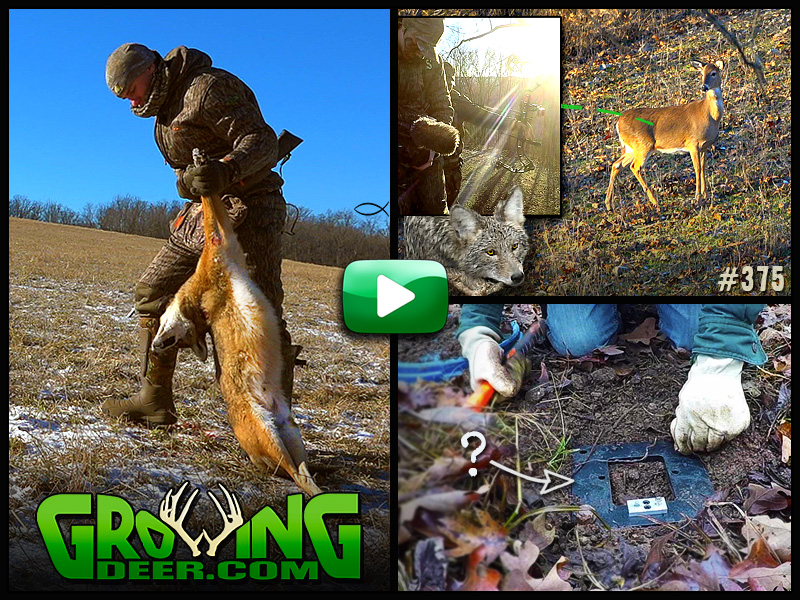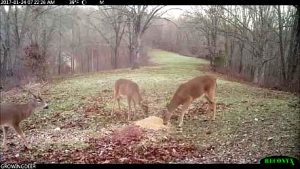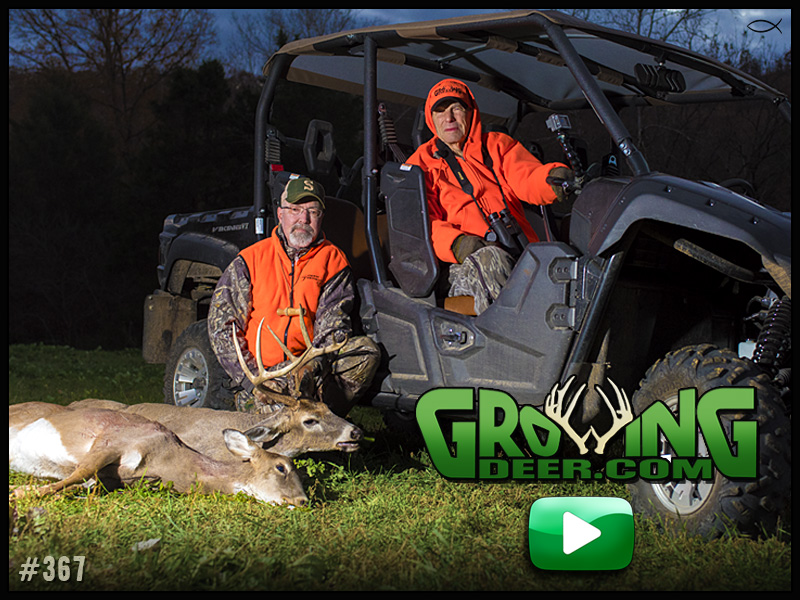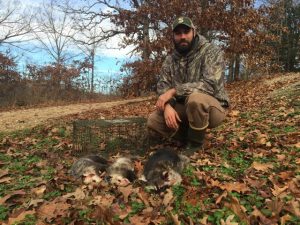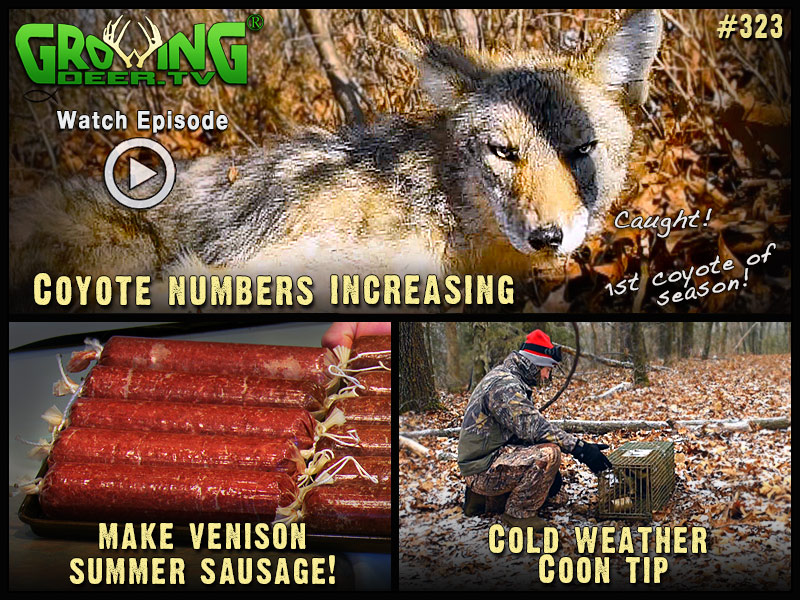Category: Predator Trapping
Trapping Tip: Share Trap Locations With A Map
We know schedules are crazy and days on the trapline may be limited. Teaming up with a buddy or neighbor that check traps when you can’t is a great way to keep those traps working! HuntStand is a great tool for sharing exact trap locations between multiple people.
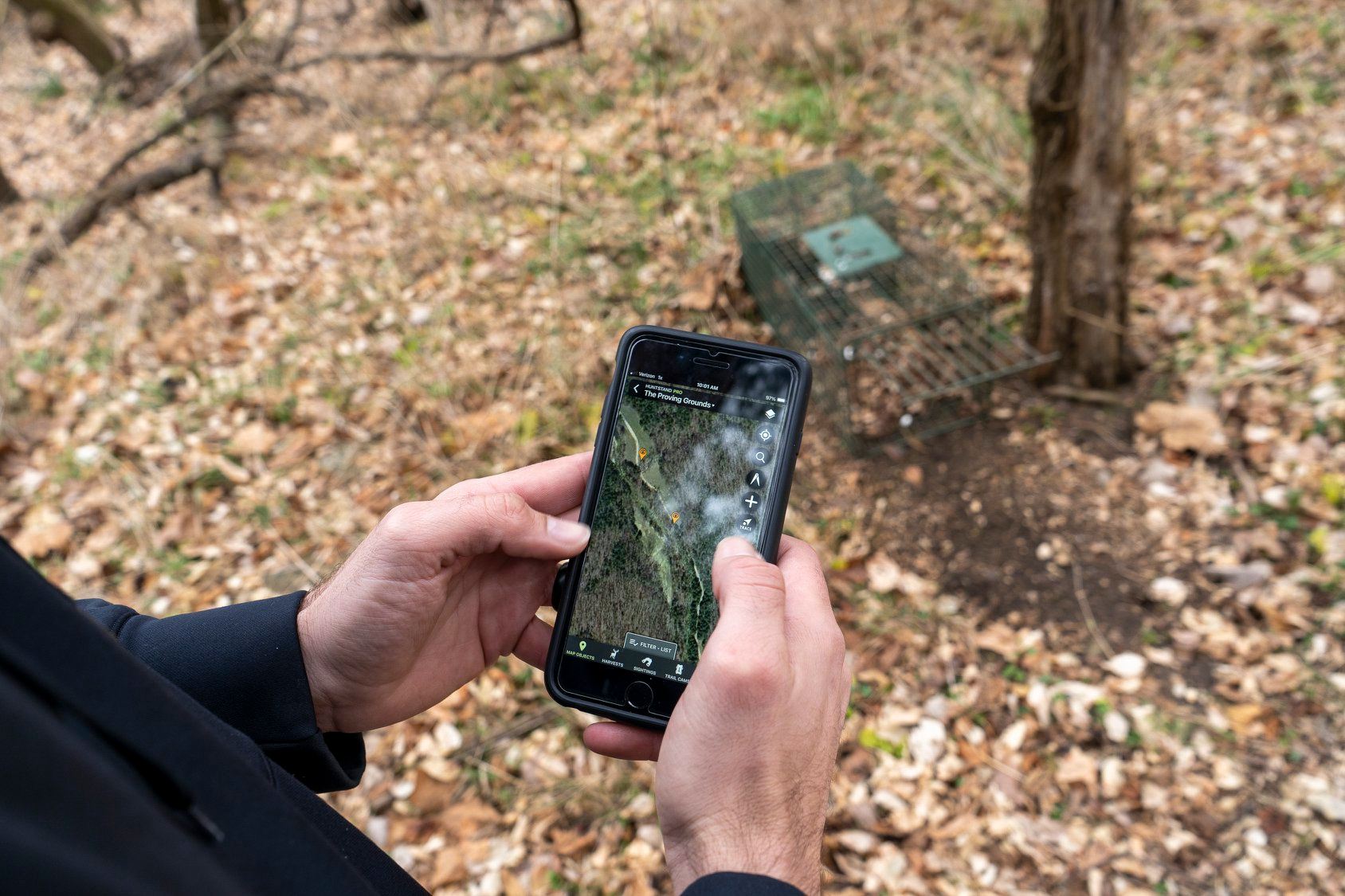
Easy, Early Scouting for Trapping
As we check the RECONYX for deer we also make notes of where raccoons and opossums are active. This information helps us place Duke Traps exactly where critters are moving!
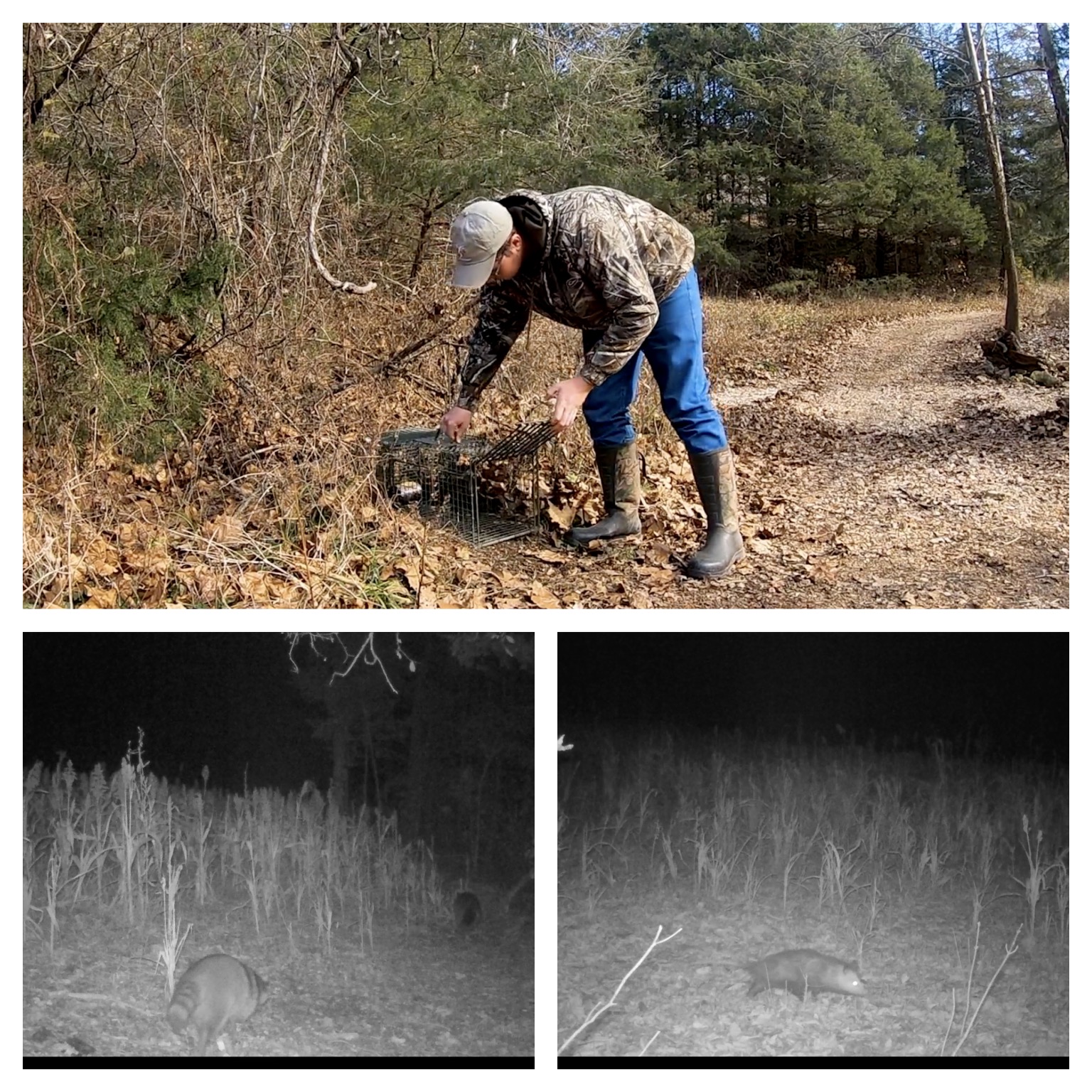
While trapping in the early part of the trapping season may not yield the best for fur prices, it can be a good time to start trapping nest predators. Concerns over the impact on deer movement need to be considered. However, deer certainly become conditioned to vehicles that deliver feed, while avoiding all other vehicles on the same property. If you check the trap line at the same time daily, the deer probably know the noise of a truck or ATV, and the smells associated with the trapping gear. If there is a long pattern of people passing through the property without threatening the deer herd, it’s likely the deer are not bothered by trappers — they are conditioned to his presence.
Deer Hunting And Management: The Effect Of The Changing Predator Base
Successful deer management to grow and hunt bucks in a free-range environment has taken a new twist over the last 10 years. Just following the play book for passing bucks and providing quality food, cover, and water may not yield the results you desire. Something has changed throughout much of the range of the white-tailed deer.
It’s the number of predators. When I was a boy during the 1960s and 70s, coyotes were shot on sight by farmers (almost every farmer I knew always had a rifle in his truck). Raccoon pelts were bringing $50 and anyone I knew that was any kind of hunter or outdoorsmen trapped and/or hunted raccoons as a source of additional income. Chicken hawks (any large hawk was called a chicken hawk) were also shot on sight. These actions didn’t cause any of these predators to go extinct.
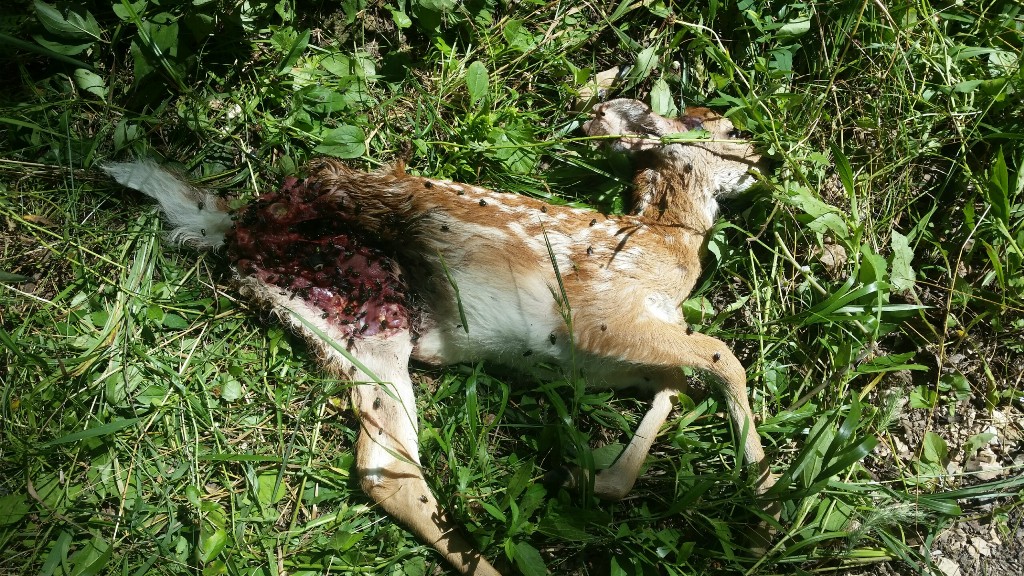
In college I was taught to feel sorry for predators. My “book learning” taught the theory that predators were almost never an issue with game species. That might have been true then (although I had a hard time buying into the theory). I was also taught in college that all natural systems are very dynamic – always changing (I certainly have experienced and agree with that!).
Whatever the theories and realities were, the current impact of predators on deer, turkey, quail and other game species are real and measurable! I had a graduate student ten years ago study the impacts of coyote and bobcats on fawn recruitment (fawns surviving until hunting season) on a private property in northern Alabama. Briefly summarized, the results were stunning! He monitored fawn recruitment during year one, then had a trapper remove many coyotes and bobcats from the 2,000 acre property during the following fawning season. During the second fawning season there was a 150+% increase in fawns at the same property as a result of removing 20+ coyotes and 10 bobcats! It appeared the turkey and rabbit population also exploded!
Since that time, much more research has been conducted that supports predators are changing the dynamics of managing deer. Several of the researchers reported results of fawn mortality documented by the use of vaginal transmitters (VITS). This technology allowed researchers to capture does and insert a transmitter in their vagina. The VIT is pushed out of the birth canal when the fawn is born and alerts the researchers by changing the frequency/tone of signal. Researchers can often find the birth site and/or fawn within four hours or less after birth.
Dr. John Kilgo, a talented researcher for the Forest Service, has years of such data. He and his staff have documented that in recent years, 70% of the fawns were killed by predators at their research site (a 300 square mile area in South Carolina) during the first few months after birth! 62% of the total mortality was due to coyotes!! This is not a guess or a theory. At this level of predation, even without any hunting mortality, deer populations will decrease in number and quality (more on the stress of predation next week).
John and his staff swabed the kill site and used advanced techniques with genetic testing to confirm if the killer was a coyote, bobcat, domestic dog, etc. Using this technology, they can tell if it was a male or female predator and if it was the same predator that killed a fawn ¼ mile or 10 miles way. John’s research is fascinating!
He ended his abstract by stating “I predict that this pressure (coyotes) will require significant changes in how deer populations are managed in the Southeast in the future, because coyotes are here to stay.”
I agree with John, but know from my student’s work and my experience, that coyotes can be trapped and their impact on deer populations reduced. Trapping and calling coyotes are fun activities (GDTV 119). However, it requires time and effort. There is no easy method to significantly reduce coyote populations. Some managers will simply let their deer herds be significantly reduced by coyotes. I, and hopefully many others, will not sit by and watch deer populations be reduced significantly by predators. I will actively call and trap coyotes to keep their population in check so deer, turkey, and other game species can maintain a healthy population.
I enjoy hearing a coyote howl. However, I enjoy seeing and interacting with deer and turkeys more. When push comes to shove, I’ll be the deer’s best friend and the coyote’s worst enemy. How about you? Will you sit by and watch America’s favorite game species be reduced to the occasional rare sighting? Or will you join me in protecting the future of hunting?
The damage by coyotes and other predators to deer and other game species is not just direct mortality. Predators also can cause much stress to game species! Next week I’ll share strategies deer hunters/managers can use to fight this change and improve the odds of growing mature bucks on their hunting grounds. While you’re waiting on that blog to come out, watch some of the coyote action caught on video by our Reconyx trail cameras here.
Growing (and protecting) Deer together,
Grant
Talking Turkey: Tips for Better Clucks, Purrs, Gobbles and More – Episode #377
New Video
Are you getting ready for turkey season? Time to knock the rust off! Grab your calls and follow along with champion callers, James Harrison and Steve Morgenstern, as they take us through the locating and calling techniques you need to know.
Wow! Big surprise in one of our Duke traps! We’re hustling to take out fawn nabbers before season closes.
UPDATE: Remember the big buck Peaches? Grant suspected he died from a brain abscess. The investigation is over and the evidence shows what killed him.
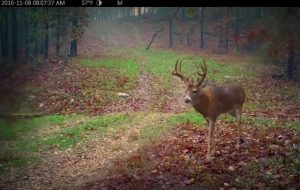 Short Clip:
Short Clip:
Watch South Paw meet his match at the new Antler-X-Treme site!
New Weekly Blog:
Learn how stressful winter can be for deer. Find out how and why we try to help deer through this time of the year.
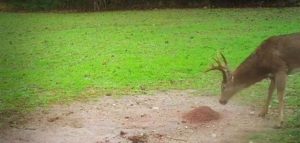
Tip of the Week:
Deer are seeking nutrients during the current stress period. Trophy Rock Four65 is a great source of the many minerals deer need.
Trapping Predators Boosts Nest Success
Tuesday marked the end of a successful trapping season at The Proving Grounds. We’re excited to have removed 41 predators from the property by trapping daily and using a variety of baits to bring them into our Duke traps. That means most likely more turkey poults, quail chicks, and fawns will survive!
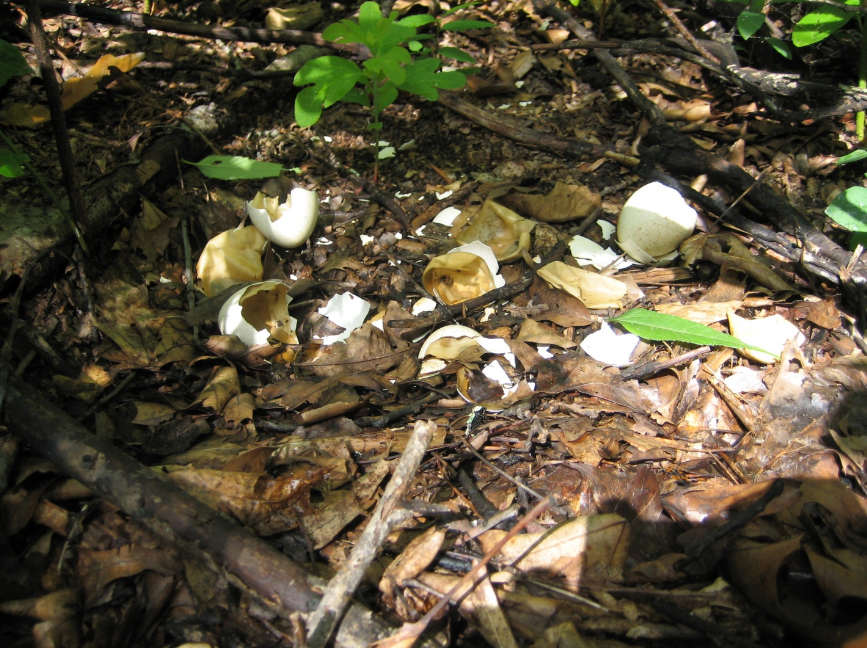
Nest predators can cause serious damage to a turkey population.
The GrowingDeer Team has been trapping predators consistently for seven years in an effort to balance the predator and prey population. We’re serious about trapping because studies show that racoons, opossums, and skunks are intense nest predators. Turkeys are especially susceptible to predation because they nest on the ground for approximately 28 days and then roost on the ground for approximately two weeks until the poults can fly.
It almost always rains at least once during the nesting season and wet hens have an odor even humans can easily smell. This makes it very easy for predators to find turkey nests and consume all the eggs and even kill the hen at times. Researchers used to call this the wet hen theory but it’s not just theory.
Last year The Proving Grounds had a high turkey poult survival rate compared to the statewide average. This was in part because of the serious effort the team has put into trapping. As land managers and hunters, we want a healthy turkey population! By trapping predators, we are one step closer to a successful turkey season.
Enjoy Creation,
Jessica
Coyotes vs. Managers – Episode #375
New Video
Watch the GrowingDeer Team battle the local coyote populations. It’s all hands on deck to hunt/trap the notorious fawn and turkey predator!
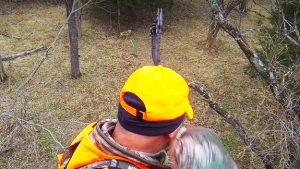 Short Clip:
Short Clip:
Watch Pro Staffer Heath Martin take a crack at a Kansas fawn nabber!
New Weekly Blog:
Find out how we are trying to reduce ticks and other deer parasites.
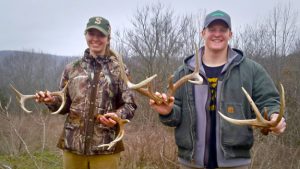
Tip of the Week:
Early shed hunting success is likely when searching food plots and south facing slopes.
Trapping Tips & Techniques
Last year’s hides are back from the tannery! Every year we get to reap the fruits of our labor on the trap line with furs that we use as gifts or make into garments. Last year Mrs. Tracy had a beautiful blanket made from raccoon and coyote fur.
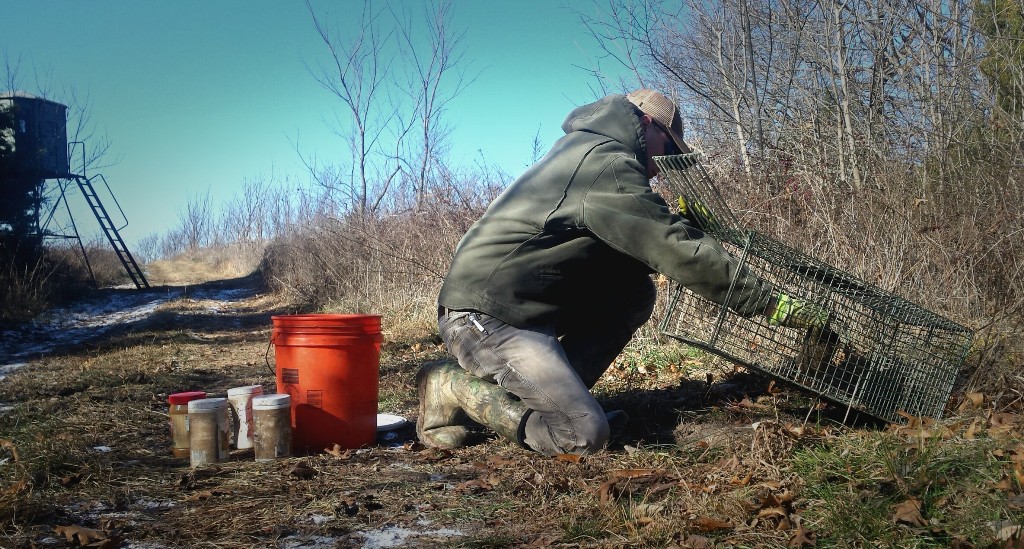
Duke Cage traps are easy to set and use.
Over the past few years fur prices have plummeted. Because of rock bottom fur prices, many trappers have decided that trapping is not worth their time and money spent. This has led to increased predator populations. It is now up to land managers to step up and help balance predator numbers.
If you are trapping to help balance predator numbers listen up! Over the years we have found several tricks that can help you become more efficient with your time.
First, we like to set our traps along the interior roads of our property. We don’t spend time diving deep into the woods to find a game trail or den tree. Many times predators will use the existing road system for their means of travel. The likelihood of predators cruising by looking for a meal is increased if traps are set at intersections of roads or creek crossings. Having traps in these locations makes it very easy to check traps while simply driving through the property and limits disturbance.
We use Duke Cage traps because they are very easy to open and close. We recently had a nasty cold spell. Often, critters will den up during extremely cold nights and then come out during the first warm night. With Duke Cage traps, we can quickly close all our traps when it’s forecasted to be extremely cold or if rain is headed our way. When it’s dry and warm we can reopen the traps quickly and easily.
Placing the bait in a tin can helps protect the bait from the weather. This saves time rebaiting when we do close and reopen traps. Often times we use cheap cat food as the main portion of our bait. Cat food smells meaty and appeals to hungry predators but absorbs moisture. By placing our bait (cat food) in the tin can, we are able to close traps for a few days then reopen, and often do not need to rebait.
Even though fur prices are low, there are ways to save money on the trap line so it is more affordable and you can reap the benefits. You may not get rich this year by selling hides but trapping will provide furs to enjoy, increase fawns and turkey poults, and allow you to spend time in creation.
Enjoying Creation,
Daniel
Never Too Old for Buck Fever! – Episode #367
New Video
Pops shows us what buck fever looks like at 86 years old. Plus, the GrowingDeer Team uses Winchester rifles to work toward their deer management goal. See the Deer Season XP ammo in action!
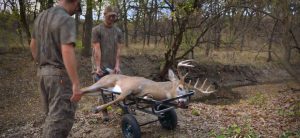 Short Clip:
Short Clip:
Hard work made easier! Watch how we prefer hauling out big bodied bucks!
New Weekly Blog:
Do you enjoy spring mornings full of gobbles? If so, now is the time to improve your turkey hunting.
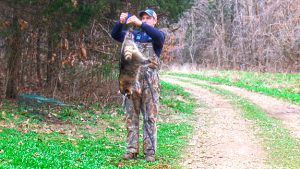 Tip of the Week:
Tip of the Week:
Trapping this season? Then run the roads! It’s okay to trap during deer season as most predators travel along roads. Placing traps along easily traversed roads will not cause much disturbance to your hunting.
Trapping Now, Turkeys Later
Let’s talk turkey! No, I’m not talking about Thanksgiving leftovers. Now is an important time of the year to begin thinking about turkeys. Even though deer season is still in full swing at The Proving Grounds, we are spending fewer mornings climbing into Summits and more time on the trap line. Why? Because we love chasing turkeys in the spring!
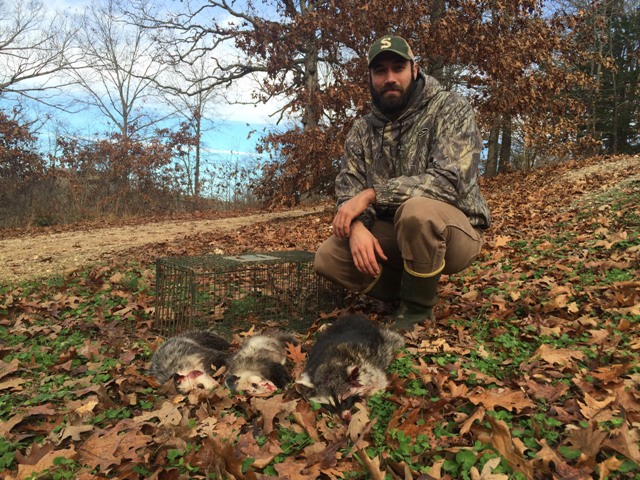
Another great start to future turkey hunting!
Each year the Missouri Department of Conservation takes a turkey survey. Hunters and wildlife managers record the number of turkeys and poults seen in the field. The survey helps provide an estimate of how many poults hatched the previous spring and Missouri’s turkey population. This fall, the Missouri Department of Conservation shared that poult numbers were very low across the state. However, based on our observations, The Proving Grounds has great poult numbers.
Why are there a higher number of poults at The Proving Grounds compared to most of the state? We trap predators, hard!
Each trapping season, we remove 50+ predators. That means fewer predators sniffing around looking for turkey eggs next spring. Trapping season began a few days ago and we are not wasting time. The Duke Traps are on the ground. We have already removed several raccoons and opossums – both are notorious turkey nest predators. We will start targeting coyotes soon.
If you enjoy long beards in the spring and wish for turkey and deer numbers to increase at your Proving Grounds, consider trapping. You will enjoy the results. We have!
Stay tuned for more trapping tips and techniques throughout the winter.
From the trap line,
Daniel
Trapping Success Continues – Episode #323
The first coyote of trapping season is in our Duke Trap. Watch this episode to learn what other critters coyotes are probably killing in your area.
Are you staying successful during late trapping season? We’ll share our trapping tips for when temperatures plunge.
Tasty ways to share venison – made easy! The right tools produce impressive results at home. Watch this quick how-to for venison summer sausage. Be a hero.
Click here to register for Spring Field Days 2016!
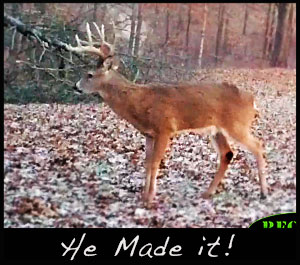 Tip of the Week:
Tip of the Week:
Late Winter Inventory
Which bucks made it through season? Keep cameras rolling now to find out!



